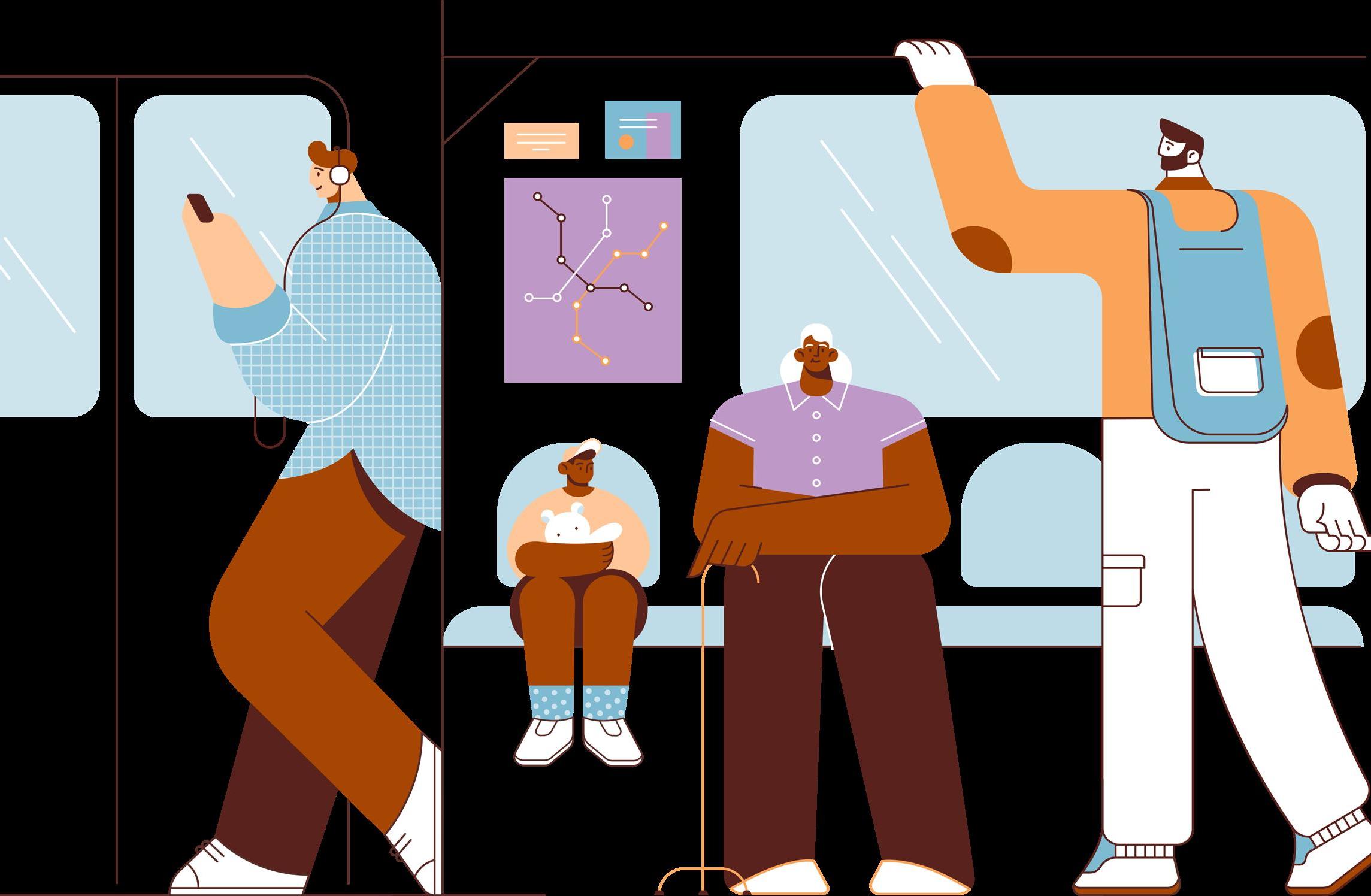
5 minute read
Unsafe Spaces
The level of safety in a neighbourhood is a priority for many people who are deciding where to live or raise a family. A sense of safety can come from low crime rates in the neighbourhood, other families nearby and the built design of public spaces (Sayin et al., 2015). These external factors
can influence whether or not an individual feels safe. Internal factors of an individual could include past trauma, state of mental health or preconceived notions of their surroundings (Rivas, 2006). Ultimately,
Advertisement
there are many circumstances where an individual could experience fear or lack of safety; urban designers can encourage
crime prevention through thoughtful design. This thesis will be examining unsafe urban public transit settings by looking at the experiences of women and men. Both women and men can experience a fear of crime when using public transit, they just experience it differently (Yavuz and Welch,
2010).
A woman’s physical surroundings can
influence her perceived level of safety. Valentine (1990) created two categories
of public places where women often feel unsafe. The first one is enclosed spaces that have minimal opportunities to leave or exit; this category includes underground
parking facilities and subway stations. The second is deserted open spaces, such as a lone bus shelter or parking lot (Valentine).
In the first category, a predator could attack knowing there is no opportunity for the victim to escape. In the second one, a predator could harm someone and there would be no witnesses (Valentine).
Within these two categories, this thesis
will be analyzing the perceived safety
experience of women at bus stops. Long waiting times at a bus stop can influence the perception of safety and satisfaction of the journey (Abenoza et al., 2018).
Bus stops are where the majority of crime occurs compared to other locations along
22
Figure 1.4 A woman at night in dim lighting (Women’s Republic, 2019).

a public transit route (Abenoza et al.).
A way for municipalities to encourage safe bus stop environments is to provide proper lighting, shelters with seating and greenery. When designed properly, these
built characteristics of a bus stop can reduce the level of anxiety in an individual (Abenoza et al.).
In addition to the built surroundings, women often feel unsafe using public transportation depending on the people that are nearby. Many women are in constant fear of being sexually harassed, followed, cat-called or threatened in transportation settings (Yavuz and Welch,
23
2010). A sample of roughly 1,200 women
was selected in London and surveyed on their experiences with sexual assault, and they discovered that
40 percent of the women had experienced rape, attempted rape or another kind of sexual assault at “ least once” (Hall, 1985)
This fear of harassment can lead to women avoiding public transportation depending on the time of day if they are not accompanied by a friend or partner, or they avoid it entirely and use a different method of transportation (Loukaitou-Sideris
and Fink, 2009). Women have specific
needs to feel safe when they use public transportation; they should be able to travel
within their community safely and with ease. Designers must acknowledge these needs for women to provide safe public spaces in their city.
Alternatively, men experience a fear of crime in public settings that are different from women. To reiterate, everyone’s feelings vary based on their personal experiences regardless of gender; but society has held different expectations of men compared to women. Men typically want to be perceived as strong and masculine; this expectation can cause them to deny any fear of crime in public settings in hopes to not seem “weak” (Yavuz and Welch, 2010). Regardless of societal pressure, studies show that men tend to feel a sense of fear when they are alone and there is a group of men nearby (Loukaitou-Sideris and Fink, 2009). Yavuz
and Welch (2010) discovered that men
typically report experiences of physical harm in transit settings such as being robbed rather than being sexualized the
way women often are.
While men can experience a fear of crime, it is women who statistically experience higher fear of assault and being victimized in public transit settings. A study done in Great Britain concluded that “93% of females . . . reported being fearful while waiting on a train platform at night compared with 53% of males, due to the low visibility that was provided at the FEAR OF CRIME IN PUBLIC SPACE
shelters” (Yavuz and Welch, 2010). These 2495 problems need to be acknowledged by
Safety Measures
Service Attributes
Negative experiences w/safety Female
VULNERABILITY PERCEIVED PERCEPTION OF SAFETY our city planners and must take the proper incentives to be solved through better design.
Transit shelters must be designed for the respective safety needs of men and women. While landscape architects can’t
control the choices people make, they
Other individual demographics can create the preconditions for a safer environment. By implementing better
Figure 1. General model of perceived safety. design strategies, men and especially Figure 1.5 A general model for perceived safety (Yavuz, N., & Welch, E. 2010). women can have more confidence when equally. In fact, some strategies may be more using shared public spaces. as good places to commit crimes (Nasar and effective for men than women and vice versa. Fisher, 1993; Cozens et al., 2005). According The general model of perceived safety as shown in Figure 1 depicts the primary conto the broken windows theory, perceptions of insecurity are determined by the ‘messages’ 24 structs of interest in this paper and serves people get from the signs of neighbourhood as a guide to the rest of this section. The disorder: if no one cares that these happen, model depicts perceived safety as a function then anything could happen here; the place is of perceived vulnerability, which mediates not safe (Wilson and Kelling, 1982). the effects of security measures, service According to prospect–refuge theory, areas
25
Figure 1.6 Bus ride. © Drawkit. Reprinted from Transport Illustrations, n.d.











